 Search by Keyword
|
"GOOD NIGHT"
(John Lennon – Paul McCartney)
The Beatles are the most commercially successful band in the history of popular music. Of course, since you are reading this right now, you probably already know that. They have sold an estimated 600 million records worldwide. While the group has prided themselves on tackling many other genres of music, they are categorized as a "rock/pop" band...the most popular "rock/pop" band of all time.
 Let's all imagine for a moment a scenario where there was a person living somewhere on this planet who never heard of The Beatles. And let us suppose that this person, upon entering an elevator in his office building one afternoon, heard the wonderfully lush lullaby entitled “Good Night” and was so taken by the song's beauty that he sought out to identify the artist of this piece of music. Upon his inquiry he found that the orchestra responsible for this masterpiece called itself The Beatles and went to his local record store and purchased the LP that contained that song. What do you think his reaction would be when the needle of his record player landed on the first track, “Back In The U.S.S.R.”? Or later when he heard “Happiness Is A Warm Gun,” “Helter Skelter” and then “Revolution 9”? Let's all imagine for a moment a scenario where there was a person living somewhere on this planet who never heard of The Beatles. And let us suppose that this person, upon entering an elevator in his office building one afternoon, heard the wonderfully lush lullaby entitled “Good Night” and was so taken by the song's beauty that he sought out to identify the artist of this piece of music. Upon his inquiry he found that the orchestra responsible for this masterpiece called itself The Beatles and went to his local record store and purchased the LP that contained that song. What do you think his reaction would be when the needle of his record player landed on the first track, “Back In The U.S.S.R.”? Or later when he heard “Happiness Is A Warm Gun,” “Helter Skelter” and then “Revolution 9”?
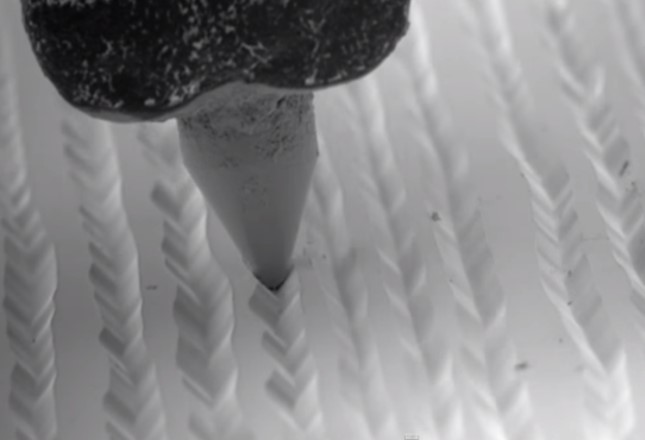 Similarly, what would your first impression of The Beatles be if “Good Night” was the first song you ever heard by the group? While it is true that this song has probably never made any Beatle fan's top ten list, one has to admit that “Good Night” is indeed a beautiful piece of music. Therefore, for those who are used to lifting the phonograph needle, or ejecting your compact disc, as the final track of the “White Album” begins coming through your speakers, I urge you to give it a good listen to appreciate what its author, John Lennon, wanted you to experience. It won't hurt you, I promise! Similarly, what would your first impression of The Beatles be if “Good Night” was the first song you ever heard by the group? While it is true that this song has probably never made any Beatle fan's top ten list, one has to admit that “Good Night” is indeed a beautiful piece of music. Therefore, for those who are used to lifting the phonograph needle, or ejecting your compact disc, as the final track of the “White Album” begins coming through your speakers, I urge you to give it a good listen to appreciate what its author, John Lennon, wanted you to experience. It won't hurt you, I promise!
Songwriting History
In Lennon's 1980 Playboy magazine interview, he stated the following: "'Good Night' was written for Julian, in the way 'Beautiful Boy' was written for Sean. I gave it to Ringo."
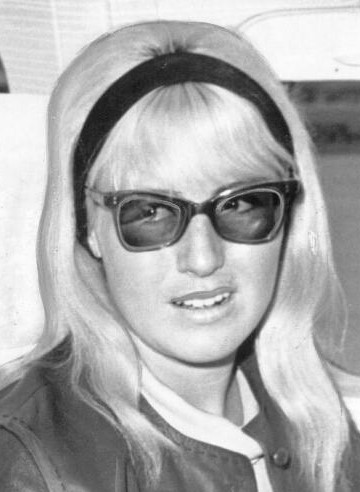 Since this song was not included among the various demos that John recorded on May 28th and 29th, 1968 at George's home in Esher, Surrey, it can easily be assumed that “Good Night” wasn't written until sometime in June of that year. It appears appropriate that John would write a song for his then five-year-old son Julian since proceedings were then under way to dissolve his marriage to his first wife Cynthia, thus breaking up his family. It appears that, since John gave the song to Ringo to sing instead of himself, Julian did not know as a child that his father wrote the song especially for him. Julian didn't become aware of this until he was about 30 years old, when being interviewed for Steve Turner's book "A Hard Day's Write." Since this song was not included among the various demos that John recorded on May 28th and 29th, 1968 at George's home in Esher, Surrey, it can easily be assumed that “Good Night” wasn't written until sometime in June of that year. It appears appropriate that John would write a song for his then five-year-old son Julian since proceedings were then under way to dissolve his marriage to his first wife Cynthia, thus breaking up his family. It appears that, since John gave the song to Ringo to sing instead of himself, Julian did not know as a child that his father wrote the song especially for him. Julian didn't become aware of this until he was about 30 years old, when being interviewed for Steve Turner's book "A Hard Day's Write."
For years, many have just assumed that “Good Night” was written by Paul since that's the kind of song that he would normally write. “Everybody thinks that Paul wrote 'Good Night' for me to sing,” Ringo explained in 1968, “but it was John who wrote it for me. He's got a lot of soul, John has!”
 In his book “Many Years From Now,” McCartney expounds on this. “You could almost be forgiven for thinking 'Good Night' was mine, because it's so soft and melodic and so un-John. I believe John wrote this as a lullaby for Julian, and it was a very beautiful song that Ringo ended up singing to the accompaniment of a big string orchestra. I think John felt it might not be good for his image for him to sing it but it was fabulous to hear him do it, he sang it great. We heard him sing it in order to teach it to Ringo and he sang it very tenderly.” In his book “Many Years From Now,” McCartney expounds on this. “You could almost be forgiven for thinking 'Good Night' was mine, because it's so soft and melodic and so un-John. I believe John wrote this as a lullaby for Julian, and it was a very beautiful song that Ringo ended up singing to the accompaniment of a big string orchestra. I think John felt it might not be good for his image for him to sing it but it was fabulous to hear him do it, he sang it great. We heard him sing it in order to teach it to Ringo and he sang it very tenderly.”
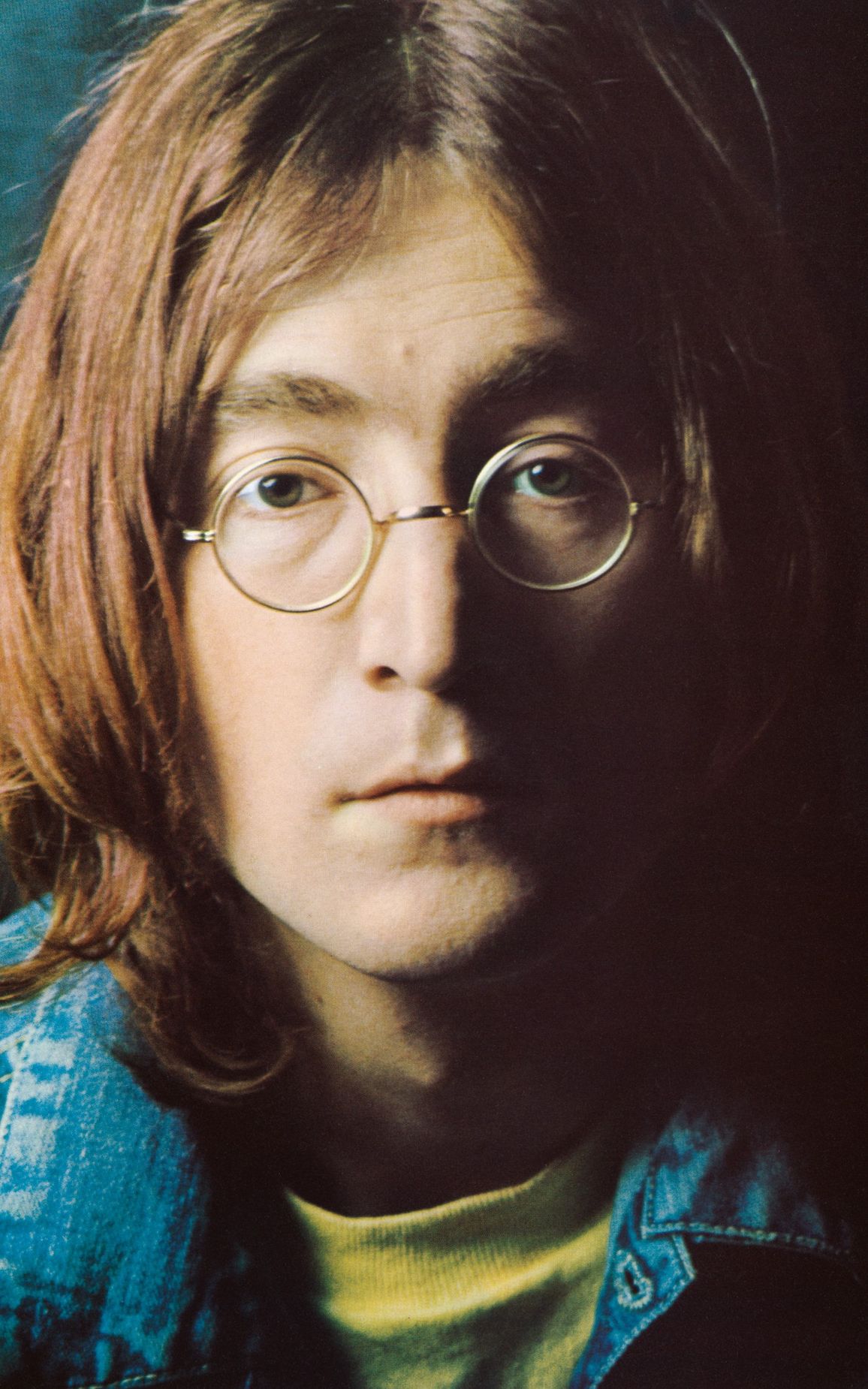 Paul continues: “John rarely showed his tender side, but my key memories of John are when he was tender, that's what has remained with me; those moments where he showed himself to be a very generous, loving person. I always cite that song as an example of the John beneath the surface that we only saw occasionally. I think that was what made us love John, otherwise he could be unbearable and he could be quite cruel. Now that I'm older, I realize that his hostility was a cover-up for the vulnerability that he felt, and if you look at his family history it's easy to see why. But this is an example of that tender side. I don't think John's version was ever recorded.” Paul continues: “John rarely showed his tender side, but my key memories of John are when he was tender, that's what has remained with me; those moments where he showed himself to be a very generous, loving person. I always cite that song as an example of the John beneath the surface that we only saw occasionally. I think that was what made us love John, otherwise he could be unbearable and he could be quite cruel. Now that I'm older, I realize that his hostility was a cover-up for the vulnerability that he felt, and if you look at his family history it's easy to see why. But this is an example of that tender side. I don't think John's version was ever recorded.”
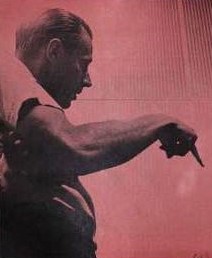 In 1968, when Paul was asked about “Good Night,” he replied, “John wrote it mainly, it's his tune, which is surprising for John, who doesn't usually write this kind of tune. It's a very sweet tune, and Ringo sings it great, I think. The arrangement was done by George Martin, because he's very good at that kind of arrangement, you know, a very lush, sweet arrangement. It's very sweet.” Some may feel that Paul's response above hints that he had some involvement in writing "Good Night," saying that “John wrote it mainly,” but all of the other evidence we can find indicates that Lennon was its sole composer. Paul probably was still trying to keep the “Lennon/McCartney” songwriting team intact by intimating that it was more John's than his, when in fact it was all John's. And concerning George Martin's arrangement, Lennon is supposed to have asked him to make the strings sound "real cheesy," only to exclaim retrospectively in 1980 that the arrangement “was possibly overlush.” In 1968, when Paul was asked about “Good Night,” he replied, “John wrote it mainly, it's his tune, which is surprising for John, who doesn't usually write this kind of tune. It's a very sweet tune, and Ringo sings it great, I think. The arrangement was done by George Martin, because he's very good at that kind of arrangement, you know, a very lush, sweet arrangement. It's very sweet.” Some may feel that Paul's response above hints that he had some involvement in writing "Good Night," saying that “John wrote it mainly,” but all of the other evidence we can find indicates that Lennon was its sole composer. Paul probably was still trying to keep the “Lennon/McCartney” songwriting team intact by intimating that it was more John's than his, when in fact it was all John's. And concerning George Martin's arrangement, Lennon is supposed to have asked him to make the strings sound "real cheesy," only to exclaim retrospectively in 1980 that the arrangement “was possibly overlush.”
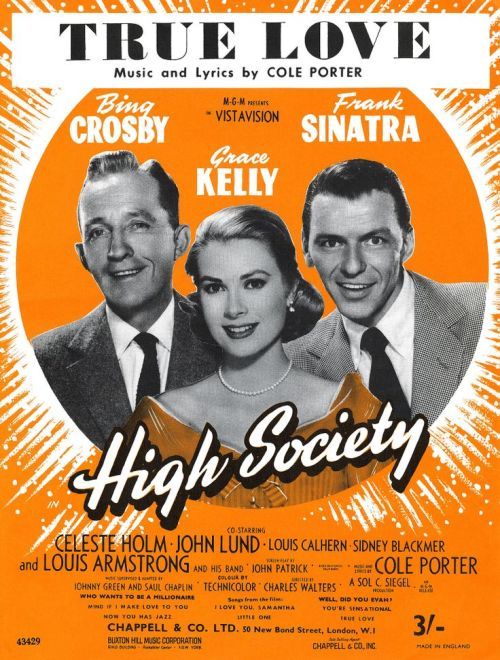 As for the song's inspiration, Ian MacDonald, in his 1994 book “Revolution In The Head,” suggests Cole Porter's “True Love,” which The Beatles included in their stage act in 1960 in imitation of the rendition Elvis Presley released in 1957. In the "Track By Track" liner notes of the 50th Anniversary "White Album" box set, Paul has other ideas: "We actually did like a lot of music before rock and roll galvanized the whole thing into a direction where you had to go. I remember one of John's favorite songs, which was way before rock and roll, was 'Don't Blame Me' and another was 'Little White Lies.' Rock 'n' roll gave us a direction in life. That was finally when instead of just liking 'Little White Lies' and 'Don't Blame Me' and various other songs, it was a question of doing it." By 1968, with the expertise of George Martin as chart writer, conductor and producer, The Beatles now had a way of "doing it." Childhood guilty pleasures, such as Johnny Ray's version of "Don't Blame Me" and Ruby Murray's "Little White Lies," were now a genre as possible for The Beatles to assimilate as any. As for the song's inspiration, Ian MacDonald, in his 1994 book “Revolution In The Head,” suggests Cole Porter's “True Love,” which The Beatles included in their stage act in 1960 in imitation of the rendition Elvis Presley released in 1957. In the "Track By Track" liner notes of the 50th Anniversary "White Album" box set, Paul has other ideas: "We actually did like a lot of music before rock and roll galvanized the whole thing into a direction where you had to go. I remember one of John's favorite songs, which was way before rock and roll, was 'Don't Blame Me' and another was 'Little White Lies.' Rock 'n' roll gave us a direction in life. That was finally when instead of just liking 'Little White Lies' and 'Don't Blame Me' and various other songs, it was a question of doing it." By 1968, with the expertise of George Martin as chart writer, conductor and producer, The Beatles now had a way of "doing it." Childhood guilty pleasures, such as Johnny Ray's version of "Don't Blame Me" and Ruby Murray's "Little White Lies," were now a genre as possible for The Beatles to assimilate as any.
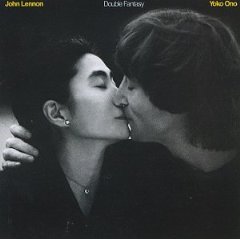 History shows that this wasn't the only song composed in dedication to Julian because of this traumatic time in his life. Paul's thoughts were also on him about this time, his song "Hey Jude" being inspired by John's son. Also of note, as stated above, John took to writing a lullaby to his second child as well, "Beautiful Boy (Darling Sean)," as heard on his 1980 release "Double Fantasy." History shows that this wasn't the only song composed in dedication to Julian because of this traumatic time in his life. Paul's thoughts were also on him about this time, his song "Hey Jude" being inspired by John's son. Also of note, as stated above, John took to writing a lullaby to his second child as well, "Beautiful Boy (Darling Sean)," as heard on his 1980 release "Double Fantasy."
Recording History
The first time the song was brought into the recording studio was on June 28th, 1968. The Beatles entered EMI Studio Two at around 7 pm for what became a very cooperative nine-and-a-half hour session devoted entirely to working on Lennon's newly written "Good Night," although the song's title wasn't decided upon just yet. Documentation lists the song as "Untitled" at this stage.
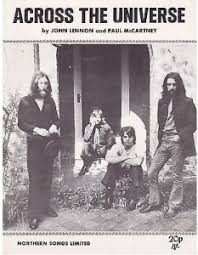 Geoff Emerick was the engineer at this session and he remembered the events of this day in his book “Here, There And Everywhere.” “At the very next session John surprised us all with the unveiling of his lush ballad 'Good Night.' Like 'Across The Universe,' the song showed his softer side, a stark contrast to the screamer that he had belted out just the night before (“Everybody's Got Something To Hide Except Me And My Monkey”)...and there was another surprise: John had decided to have Ringo sing the lead vocal. We were all totally caught off guard by that because we'd already recorded what we presumed was going to be the sole Ringo song on the LP (“Don't Pass Me By”). It's hard to imagine that John actually thought Ringo could do a better job on it than he could – he knew as well as anyone that Ringo was no singer. Perhaps it was that he was embarrassed at singing such a gentle lullaby, maybe it was not macho enough for him, or perhaps he made the decision just to keep Ringo happy because he had sensed some disquiet in the usually placid drummer.” Geoff Emerick was the engineer at this session and he remembered the events of this day in his book “Here, There And Everywhere.” “At the very next session John surprised us all with the unveiling of his lush ballad 'Good Night.' Like 'Across The Universe,' the song showed his softer side, a stark contrast to the screamer that he had belted out just the night before (“Everybody's Got Something To Hide Except Me And My Monkey”)...and there was another surprise: John had decided to have Ringo sing the lead vocal. We were all totally caught off guard by that because we'd already recorded what we presumed was going to be the sole Ringo song on the LP (“Don't Pass Me By”). It's hard to imagine that John actually thought Ringo could do a better job on it than he could – he knew as well as anyone that Ringo was no singer. Perhaps it was that he was embarrassed at singing such a gentle lullaby, maybe it was not macho enough for him, or perhaps he made the decision just to keep Ringo happy because he had sensed some disquiet in the usually placid drummer.”
 Geoff Emerick then explains what became the first task of the day. “John made a demo for Ringo to take home and practice to, and it was played back a couple of times that night...It's a shame that this particular tape has been lost to the world and nobody will ever hear the gorgeous way John sang his tender little song.” As we mentioned above, Paul remembered this demonstration by John as occurring there in the studio on this day, saying how “he sang it great” and assumed that it wasn't recorded. This confirms that it was indeed recorded and had no doubt went home with Ringo for him to practice with. Geoff Emerick then explains what became the first task of the day. “John made a demo for Ringo to take home and practice to, and it was played back a couple of times that night...It's a shame that this particular tape has been lost to the world and nobody will ever hear the gorgeous way John sang his tender little song.” As we mentioned above, Paul remembered this demonstration by John as occurring there in the studio on this day, saying how “he sang it great” and assumed that it wasn't recorded. This confirms that it was indeed recorded and had no doubt went home with Ringo for him to practice with.
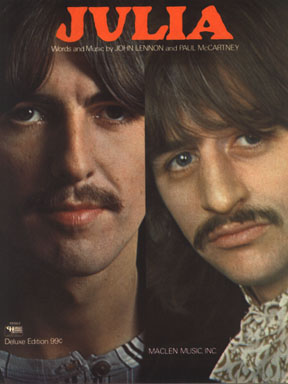 The next order of business was for John to lay down a guitar track for Ringo to add his vocals to on another day after he had suitable time to practice. Playing in a similar finger-picking style as the writer played later on "Dear Prudence," "Happiness Is A Warm Gun" and "Julia," John recorded five takes of an instrumental electric guitar rendition of the song onto track one of the four-track tape. When it was decided that "take five" was the keeper, he tripled-tracked his performance, filling up both tracks two and three with similar performances in order to thicken the sound. Interestingly, his performance on track two was recorded at half-speed so when it was played back at normal speed it was heard an octave higher. The next order of business was for John to lay down a guitar track for Ringo to add his vocals to on another day after he had suitable time to practice. Playing in a similar finger-picking style as the writer played later on "Dear Prudence," "Happiness Is A Warm Gun" and "Julia," John recorded five takes of an instrumental electric guitar rendition of the song onto track one of the four-track tape. When it was decided that "take five" was the keeper, he tripled-tracked his performance, filling up both tracks two and three with similar performances in order to thicken the sound. Interestingly, his performance on track two was recorded at half-speed so when it was played back at normal speed it was heard an octave higher.
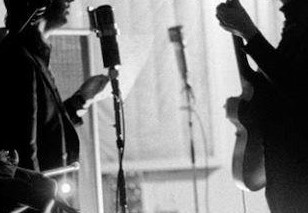 After this was done, John decided to run through the song with Ringo for rehearsal purposes. Photographic evidence from this session displays the instrumentation being just John on his Epiphone Casino electric guitar and Ringo on vocals. These photos indicate that all the lights were dimmed inside the studio and a floor lamp was lit, creating a suitable mood for this tender lullaby to be rehearsed. A third tape was utilized for recording these rehearsals, each of which began with an unscripted spoken word introduction by Ringo. Mark Lewisohn's book “The Beatles Recording Sessions” reports what some of these introductions were. One was “Come on children! It's time to toddle off to bed. We've had a lovely day at the park and now it's time for sleep.” Another was “Put all those toys away. Yes, Daddy will sing a song for you!” And yet another was “Cover yourself up, Charlie. Pull those covers up and off you go to dreamland!" The 50th Anniversary "White Album" book documents some other introductions: "Come on, it's time you little toddlers were in bed," "Come along now, we must go to bed. We've had a wonderful day," and "Cover yourself up, Charlie, no peeking." After this was done, John decided to run through the song with Ringo for rehearsal purposes. Photographic evidence from this session displays the instrumentation being just John on his Epiphone Casino electric guitar and Ringo on vocals. These photos indicate that all the lights were dimmed inside the studio and a floor lamp was lit, creating a suitable mood for this tender lullaby to be rehearsed. A third tape was utilized for recording these rehearsals, each of which began with an unscripted spoken word introduction by Ringo. Mark Lewisohn's book “The Beatles Recording Sessions” reports what some of these introductions were. One was “Come on children! It's time to toddle off to bed. We've had a lovely day at the park and now it's time for sleep.” Another was “Put all those toys away. Yes, Daddy will sing a song for you!” And yet another was “Cover yourself up, Charlie. Pull those covers up and off you go to dreamland!" The 50th Anniversary "White Album" book documents some other introductions: "Come on, it's time you little toddlers were in bed," "Come along now, we must go to bed. We've had a wonderful day," and "Cover yourself up, Charlie, no peeking."
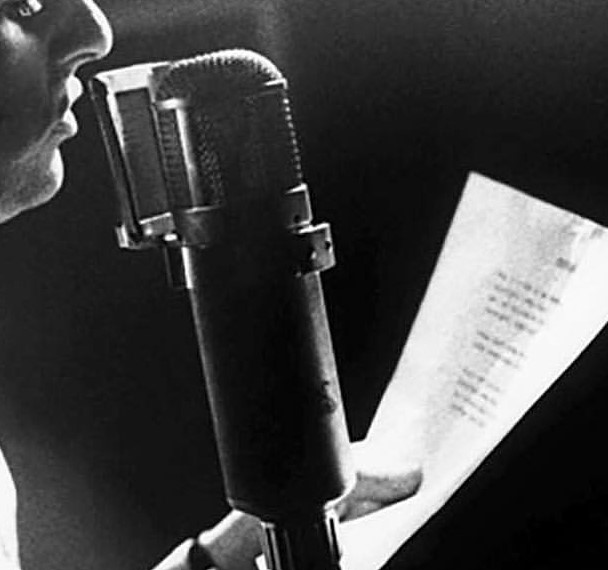 Another of these rehearsals, as heard in the Super Deluxe 50th Anniversary "White Album" box set, incorporates John's suggestion for Ringo to simply speak the first verse, this rendition beginning with Ringo's statement ”Come along, now. Put all those toys away, it's time to jump into bed and go off into dreamland. Yes, daddy will sing a song for you. Are you ready?" Ringo then begins speaking the first verse, saying, "Now it's time to say goodnight. Now don't ask me why. Now the sun..." Ringo then realized that he skipped the "Good night, sleep tight" line on his lyric sheet, which then prompted him to exclaim, "ahh...Daddy, daddy went a bit crazy!" which concluded this rehearsal attempt in laughter. At 4:30 am the next morning, they called it for the evening, allowing Ringo to use his demo to rehearse his vocals for another day. Another of these rehearsals, as heard in the Super Deluxe 50th Anniversary "White Album" box set, incorporates John's suggestion for Ringo to simply speak the first verse, this rendition beginning with Ringo's statement ”Come along, now. Put all those toys away, it's time to jump into bed and go off into dreamland. Yes, daddy will sing a song for you. Are you ready?" Ringo then begins speaking the first verse, saying, "Now it's time to say goodnight. Now don't ask me why. Now the sun..." Ringo then realized that he skipped the "Good night, sleep tight" line on his lyric sheet, which then prompted him to exclaim, "ahh...Daddy, daddy went a bit crazy!" which concluded this rehearsal attempt in laughter. At 4:30 am the next morning, they called it for the evening, allowing Ringo to use his demo to rehearse his vocals for another day.
 July 2nd, 1968, was the next day devoted to work on what was now referred to as “Good Night.” They all arrived at EMI Studio Two at about 6 pm with the sole intention of adding vocal overdubs onto the previously taped "take five" which consisted of Lennon's three guitar tracks. All three of these were first bounced down over onto track one of another four-track tape to become "take six" over which vocals were to be added. Ringo undoubtedly worked at perfecting his vocals for the song in the previous few days and, with John, Paul and George adding harmony vocals, he simultaneously recorded ten takes of vocals, numbered "take six" through "take 15" with Harrison also playing a shaker. "Take 10," as included in the Super Deluxe 50th Anniversary edition of the "White Album," shows that John, Paul and George repeated the word "dream" continuously during the song's refrain, while Lennon comments "Didn't that have a funny note?" about his guitar work from the previous day at the conclusion of the take. At the conclusion of "take 13," John sang his non popular "sugar plum fairy" introduction as he had done for earlier takes of the previous years' "A Day In The Life." At the end of the session, George Martin made two tape copies of "take 15," this being a basic performance of John on acoustic guitar, Ringo on vocals, and light percussion, so that he could compose a score for an orchestra and choir. By 12:15 am the following morning, the session was complete. July 2nd, 1968, was the next day devoted to work on what was now referred to as “Good Night.” They all arrived at EMI Studio Two at about 6 pm with the sole intention of adding vocal overdubs onto the previously taped "take five" which consisted of Lennon's three guitar tracks. All three of these were first bounced down over onto track one of another four-track tape to become "take six" over which vocals were to be added. Ringo undoubtedly worked at perfecting his vocals for the song in the previous few days and, with John, Paul and George adding harmony vocals, he simultaneously recorded ten takes of vocals, numbered "take six" through "take 15" with Harrison also playing a shaker. "Take 10," as included in the Super Deluxe 50th Anniversary edition of the "White Album," shows that John, Paul and George repeated the word "dream" continuously during the song's refrain, while Lennon comments "Didn't that have a funny note?" about his guitar work from the previous day at the conclusion of the take. At the conclusion of "take 13," John sang his non popular "sugar plum fairy" introduction as he had done for earlier takes of the previous years' "A Day In The Life." At the end of the session, George Martin made two tape copies of "take 15," this being a basic performance of John on acoustic guitar, Ringo on vocals, and light percussion, so that he could compose a score for an orchestra and choir. By 12:15 am the following morning, the session was complete.
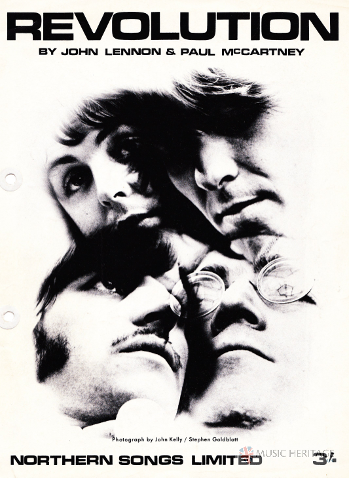 After The Beatles concentrated on other songs, such as "Ob-La-Di, Ob-La-Da" and the faster remake of "Revolution," they returned their attention to "Good Night" nearly three weeks later, on July 22nd, 1968 in EMI Studio One. This larger studio was chosen, undoubtedly, because 26 classically trained musicians and a choir were scheduled to perform on this day to begin the song fresh with George Martin's newly written score, all previous attempts at recording the song being deemed unsuitable by this time. The documentation for this day shows that a celeste and piano would be made available in the studio for use by George Martin. Upon arriving at around 7 pm, and after they quickly recorded a piano introduction to Ringo's song "Don't Pass Me By," Ringo rehearsed singing the song accompanied by George Martin on piano instead of John on acoustic guitar, these rehearsals apparently being numbered as "take 16" through "take 22." Geoff Emerick relates: “During the rehearsal run-throughs, John and Yoko stayed up in the control room while the other three Beatles remained down in the studio with George Martin, who played piano while Paul and George Harrison coached their drummer on phrasing and pitching. That created a unity that had rarely been present in these sessions. Just getting Yoko out of the studio seemed to lighten the atmosphere tremendously.” After The Beatles concentrated on other songs, such as "Ob-La-Di, Ob-La-Da" and the faster remake of "Revolution," they returned their attention to "Good Night" nearly three weeks later, on July 22nd, 1968 in EMI Studio One. This larger studio was chosen, undoubtedly, because 26 classically trained musicians and a choir were scheduled to perform on this day to begin the song fresh with George Martin's newly written score, all previous attempts at recording the song being deemed unsuitable by this time. The documentation for this day shows that a celeste and piano would be made available in the studio for use by George Martin. Upon arriving at around 7 pm, and after they quickly recorded a piano introduction to Ringo's song "Don't Pass Me By," Ringo rehearsed singing the song accompanied by George Martin on piano instead of John on acoustic guitar, these rehearsals apparently being numbered as "take 16" through "take 22." Geoff Emerick relates: “During the rehearsal run-throughs, John and Yoko stayed up in the control room while the other three Beatles remained down in the studio with George Martin, who played piano while Paul and George Harrison coached their drummer on phrasing and pitching. That created a unity that had rarely been present in these sessions. Just getting Yoko out of the studio seemed to lighten the atmosphere tremendously.”
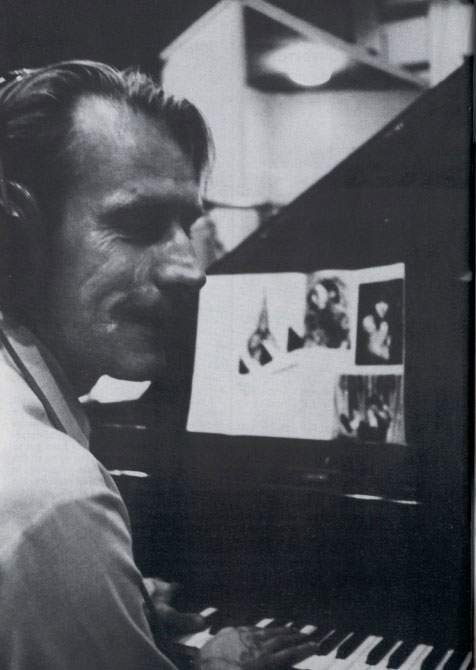 At least one of these run-throughs was captured on tape, this eventually being featured on the compilation album “Anthology 3.” Upon listening, we hear George Martin, Paul and George Harrison giving suggestions to Ringo as well as for the arrangement of the song. It was decided at this point to begin the song with the refrain (“dream sweet dreams for me...”), John giving his approval from the control room with the words “It sounds nice starting like that, anyway.” George Harrison then suggests starting the vocals directly on the downbeat after the song is counted off, George Martin then asking George Harrison to count it off for them, which he does. We are then treated to a beautiful performance of George Martin on piano, Ringo on vocals, and George Harrison once again on shaker. Paul quietly joins in on vocals to guide Ringo when he sings the song's title. At least one of these run-throughs was captured on tape, this eventually being featured on the compilation album “Anthology 3.” Upon listening, we hear George Martin, Paul and George Harrison giving suggestions to Ringo as well as for the arrangement of the song. It was decided at this point to begin the song with the refrain (“dream sweet dreams for me...”), John giving his approval from the control room with the words “It sounds nice starting like that, anyway.” George Harrison then suggests starting the vocals directly on the downbeat after the song is counted off, George Martin then asking George Harrison to count it off for them, which he does. We are then treated to a beautiful performance of George Martin on piano, Ringo on vocals, and George Harrison once again on shaker. Paul quietly joins in on vocals to guide Ringo when he sings the song's title.
 After the classical musicians arrived, they set up and began recording George Martin's score for the song, starting with "take 23." Ringo sang his lead vocals live with the studio musicians, evidenced by George Martin asking "Was Ringo in time with the orchestra?" after the producer conducted the musicians on the first take. Ringo was instructed to whisper something at the end of the song as a good night message to a sleeping child, "take 32" appearing as, "Night, night, Daddy, Night, night, Mammy." Seasoned studio musicians as they were, they nailed the perfect performance rather quickly, which ended the orchestral portion of the session at 10 pm. After the classical musicians arrived, they set up and began recording George Martin's score for the song, starting with "take 23." Ringo sang his lead vocals live with the studio musicians, evidenced by George Martin asking "Was Ringo in time with the orchestra?" after the producer conducted the musicians on the first take. Ringo was instructed to whisper something at the end of the song as a good night message to a sleeping child, "take 32" appearing as, "Night, night, Daddy, Night, night, Mammy." Seasoned studio musicians as they were, they nailed the perfect performance rather quickly, which ended the orchestral portion of the session at 10 pm.
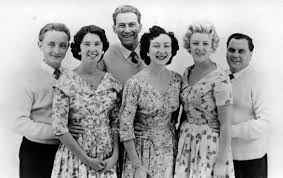 The next half hour was used to usher out the musicians and bring in eight members of The Mike Sammes Singers (“4 girls, 4 boys,” according to the EMI sheet) to record the sound of a choir. Four of these singers (Fred Lucas, Pat Whitmore, Irene King and Mike Redway) had previously been used on the track “I Am The Walrus,” so they were already well acquainted with working on a Beatles recording. However, I'm sure they were relieved to be singing a more conventional performance this time around, instead of vocal swoops and “ho, ho, ho, he, he, he, ha, ha, ha,” "stick it in your jumper" vocalizations as on the previous track! One of the sopranos from this group sang the sustained high D note during the introduction of the song during their takes. By 11:50 pm, these singers completed their duties to George Martin's satisfaction and they were then free to leave for the evening. All in all, between the orchestra and the singers, it took twelve takes to get the performance that was used on the finished recording, "take 34" being the keeper. The next half hour was used to usher out the musicians and bring in eight members of The Mike Sammes Singers (“4 girls, 4 boys,” according to the EMI sheet) to record the sound of a choir. Four of these singers (Fred Lucas, Pat Whitmore, Irene King and Mike Redway) had previously been used on the track “I Am The Walrus,” so they were already well acquainted with working on a Beatles recording. However, I'm sure they were relieved to be singing a more conventional performance this time around, instead of vocal swoops and “ho, ho, ho, he, he, he, ha, ha, ha,” "stick it in your jumper" vocalizations as on the previous track! One of the sopranos from this group sang the sustained high D note during the introduction of the song during their takes. By 11:50 pm, these singers completed their duties to George Martin's satisfaction and they were then free to leave for the evening. All in all, between the orchestra and the singers, it took twelve takes to get the performance that was used on the finished recording, "take 34" being the keeper.
 Since Ringo's vocals were allocated to their own track on the four-track tape, it was decided that he would re-record them after all the studio musicians and singers had gone. His impromptu introductions to the song, as toyed around with in earlier sessions, were dropped entirely, although his impromptu concluding whisper ended up as a fatherly “Good night, good night everybody, everybody everywhere, good night.” Author Mark Lewisohn was treated to a listening of the master tapes from this session in preparation for his book “The Beatles Recording Sessions” and describes this vocal session as “clearly a lot of fun,” Lewisohn hearing “Ringo in fits of laughter between takes and telling jokes aplenty.” Some of this was kept for posterity on a reel of tape entitled “Beatles Chat,” which “also contains a few seconds of Ringo chatting with George Martin and Ken Scott.” After the perfect Ringo vocal was locked down, and all the tomfoolery was over, the session finally wound to a close at 1:40 am the following morning, the recording of “Good Night” being complete. Since Ringo's vocals were allocated to their own track on the four-track tape, it was decided that he would re-record them after all the studio musicians and singers had gone. His impromptu introductions to the song, as toyed around with in earlier sessions, were dropped entirely, although his impromptu concluding whisper ended up as a fatherly “Good night, good night everybody, everybody everywhere, good night.” Author Mark Lewisohn was treated to a listening of the master tapes from this session in preparation for his book “The Beatles Recording Sessions” and describes this vocal session as “clearly a lot of fun,” Lewisohn hearing “Ringo in fits of laughter between takes and telling jokes aplenty.” Some of this was kept for posterity on a reel of tape entitled “Beatles Chat,” which “also contains a few seconds of Ringo chatting with George Martin and Ken Scott.” After the perfect Ringo vocal was locked down, and all the tomfoolery was over, the session finally wound to a close at 1:40 am the following morning, the recording of “Good Night” being complete.
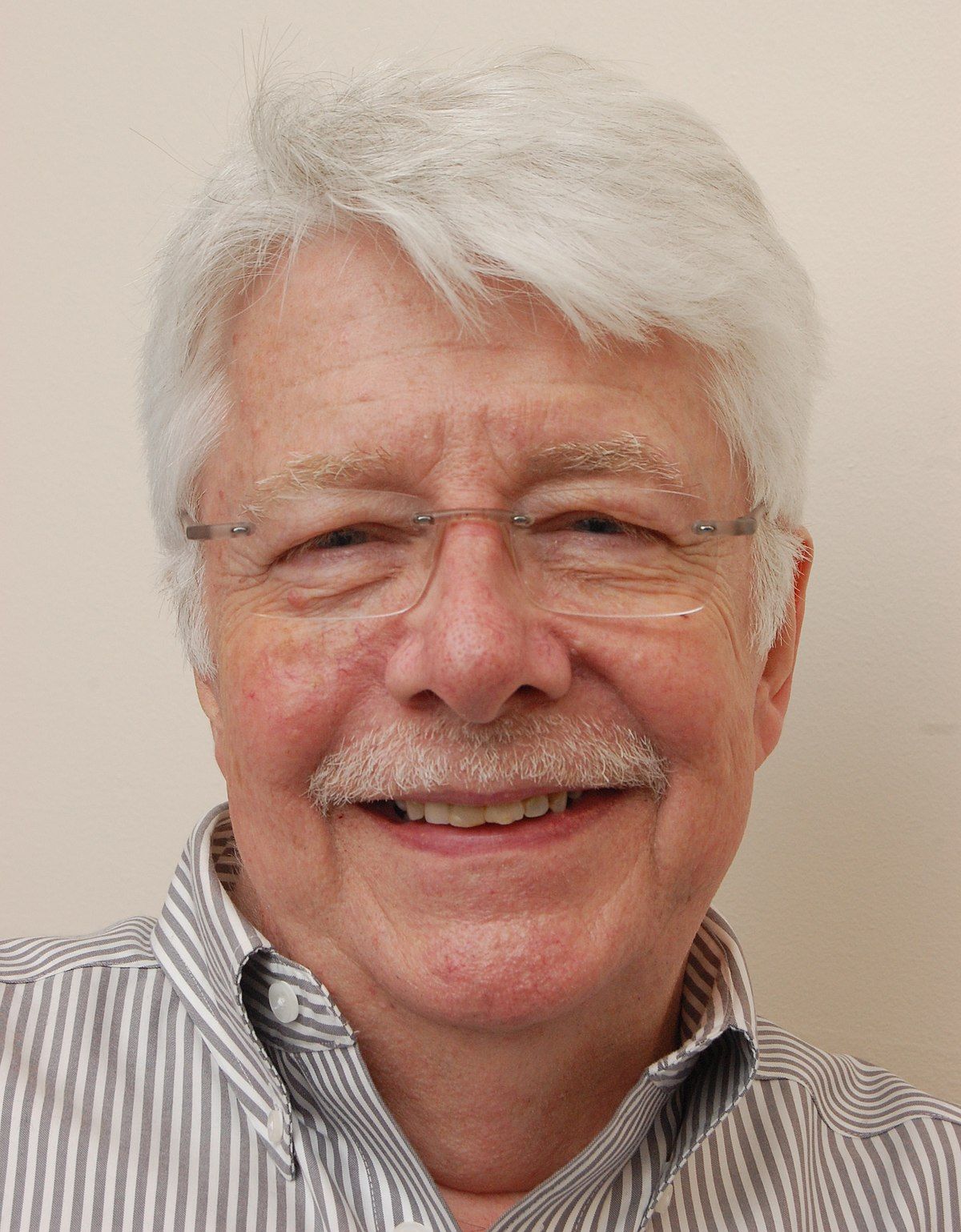 The next day (actually later that same day), July 23rd, 1968, six attempts at a mono mix of “Good Night” were made in control room of EMI Studio Two by George Martin and engineers Ken Scott and Richard Lush. They were deemed unusable, though, and were improved upon months later. The next day (actually later that same day), July 23rd, 1968, six attempts at a mono mix of “Good Night” were made in control room of EMI Studio Two by George Martin and engineers Ken Scott and Richard Lush. They were deemed unusable, though, and were improved upon months later.
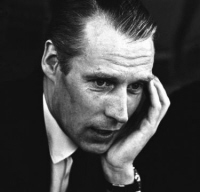 October 11th, 1968, was the date that the releasable mono and stereo mixes were created. George Martin, Ken Scott and engineer John Smith assembled once again in the control room of EMI Studio Two for two attempts at the mono mix, the second one being best. They only needed one try at getting a stereo mix, this time deciding to fade in the introduction unlike the mono which just comes in at full volume October 11th, 1968, was the date that the releasable mono and stereo mixes were created. George Martin, Ken Scott and engineer John Smith assembled once again in the control room of EMI Studio Two for two attempts at the mono mix, the second one being best. They only needed one try at getting a stereo mix, this time deciding to fade in the introduction unlike the mono which just comes in at full volume
John sang an acapella verse of "Good Night" on a recording from a hotel room at the Hilton Hotel in Amsterdam, Holland sometime between March 25th and 31st, 1969. This spontaneous segment was included on the track "Amsterdam" on John and Yoko's "Wedding Album," which was released on November 7th, 1969.
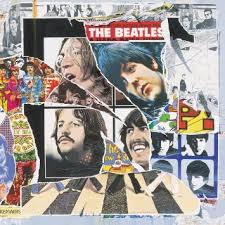 Sometime in 1996, George Martin and Geoff Emerick returned to the master tape of the July 22nd, 1968 “Good Night” session and found a very interesting rehearsal with George Martin on piano and Ringo on vocals. They decided to include it on the compilation album “Anthology 3,” mixing in the orchestral conclusion to the song after this rehearsal meandered to an indefinite conclusion. The results clearly show the beauty of this tender John Lennon composition. Sometime in 1996, George Martin and Geoff Emerick returned to the master tape of the July 22nd, 1968 “Good Night” session and found a very interesting rehearsal with George Martin on piano and Ringo on vocals. They decided to include it on the compilation album “Anthology 3,” mixing in the orchestral conclusion to the song after this rehearsal meandered to an indefinite conclusion. The results clearly show the beauty of this tender John Lennon composition.
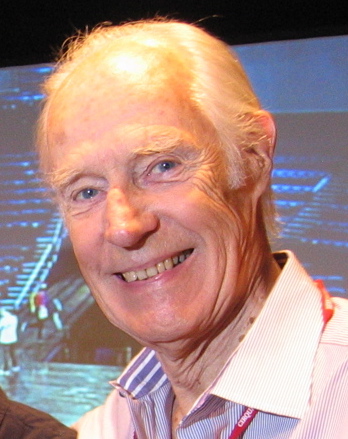 Also, between 2004 and 2006, George Martin and his son Giles Martin returned to these same master tapes to include segments of “Good Night” into tracks used for the album “Love,” which was used as the soundtrack to the Cirque du Soleil show of the same name. George Martin was proud enough of his orchestral score for the song that he included segments of it on two tracks of this new album, “Octopus's Garden” and “All You Need Is Love." Also, between 2004 and 2006, George Martin and his son Giles Martin returned to these same master tapes to include segments of “Good Night” into tracks used for the album “Love,” which was used as the soundtrack to the Cirque du Soleil show of the same name. George Martin was proud enough of his orchestral score for the song that he included segments of it on two tracks of this new album, “Octopus's Garden” and “All You Need Is Love."
 Sometime in 2018, Giles Martin and engineer Sam Okell returned to the master tapes of "Good Night" to create an amazing new stereo mix for inclusion on the various 50th Anniversay editions of the "White Album." While they were at it, they created stereo mixes of the innovative but abandoned "take 10" of the song with John's guitar and the group's harmony vocals from June 28th, 1968, a short introduction to John and Ringo's vocal rehearsals later that day, and a July 22nd vocal rehearsal with George Martin on piano. Sometime in 2018, Giles Martin and engineer Sam Okell returned to the master tapes of "Good Night" to create an amazing new stereo mix for inclusion on the various 50th Anniversay editions of the "White Album." While they were at it, they created stereo mixes of the innovative but abandoned "take 10" of the song with John's guitar and the group's harmony vocals from June 28th, 1968, a short introduction to John and Ringo's vocal rehearsals later that day, and a July 22nd vocal rehearsal with George Martin on piano.
CLICK HERE TO LISTEN TO A BRIEF AUDIO HISTORY OF THIS SONG ON OUR PARTNER WEBSITE "THE BEATLES SONG BY SONG"
Song Structure and Style
The structure for "Good Night" is quite simple, as a good lullaby should be, namely 'verse/ refrain/ verse/ refrain/ instrumental/ verse/ refrain' (or ababcab) with an appropriate introduction and conclusion thrown in.
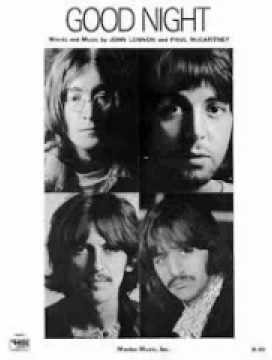 When George Martin wrote the score for the song, he apparently still thought that his original idea of introducing the song with the refrain was a good one. However, he decided that Ringo shouldn't sing it as he was instructed to back on June 28th, nor should the melody line be played instrumentally. Instead, the first four measures of the introduction would comprise the chords of the refrain with simple embellishments followed by two measures that feature an identifiable riff reminiscent of the melody line of the first two measures of the verse, along with the vocalizations of a soprano from the Mike Sammes Singers hitting a high D note in the second measure. This makes for a lush six measure introduction that works beautifully with Lennon's gorgeous melody. When George Martin wrote the score for the song, he apparently still thought that his original idea of introducing the song with the refrain was a good one. However, he decided that Ringo shouldn't sing it as he was instructed to back on June 28th, nor should the melody line be played instrumentally. Instead, the first four measures of the introduction would comprise the chords of the refrain with simple embellishments followed by two measures that feature an identifiable riff reminiscent of the melody line of the first two measures of the verse, along with the vocalizations of a soprano from the Mike Sammes Singers hitting a high D note in the second measure. This makes for a lush six measure introduction that works beautifully with Lennon's gorgeous melody.
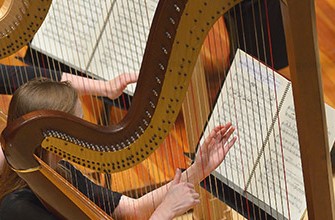 Next comes the first verse which is eight measures in length. Ringo's vocals come in directly on the downbeat of the first measure, while the arrangement highlights the string instruments predominantly and swells gently in volume as the measures continue. A somewhat hushed change in atmosphere appears in the four measure refrain that follows, emphasis on harp and plucked strings allowing for Ringo's simplistic but effective melody line to ring out. The backing vocalists appear here as well, repeating “dream sweet dream” in the gap left by Ringo in measure two while also adding choir-like padding in the last two measures. Next comes the first verse which is eight measures in length. Ringo's vocals come in directly on the downbeat of the first measure, while the arrangement highlights the string instruments predominantly and swells gently in volume as the measures continue. A somewhat hushed change in atmosphere appears in the four measure refrain that follows, emphasis on harp and plucked strings allowing for Ringo's simplistic but effective melody line to ring out. The backing vocalists appear here as well, repeating “dream sweet dream” in the gap left by Ringo in measure two while also adding choir-like padding in the last two measures.
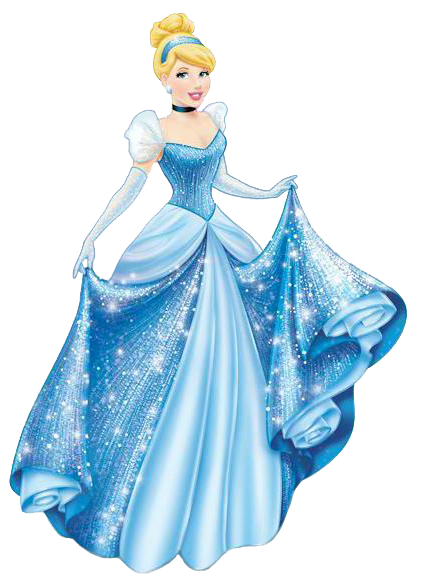 Then follows the second verse and refrain which are identical to the first in length of measures and overall arrangement. The backing vocalists, however, sing the entire verse with Ringo this time around as the instrumentalists weave differently and more dramatically than before, the results sounding eerily like something from an animated Walt Disney movie. Then follows the second verse and refrain which are identical to the first in length of measures and overall arrangement. The backing vocalists, however, sing the entire verse with Ringo this time around as the instrumentalists weave differently and more dramatically than before, the results sounding eerily like something from an animated Walt Disney movie.
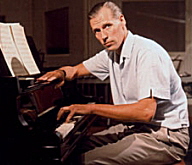 What then follows is a four measure instrumental section composed by George Martin that includes ascending stair-step melody lines that differentiate this section from anything else heard in the song. George Martin must have felt the need to break up the simple sequence of 'verse/ refrain' pairings with something that would change the overall feel and then become a nice segue back into a third 'verse/ refrain' set. Also interesting is Ringo's simple humming of a George Martin-written melody line to offset the startling progressions played by the instrumentalists in the foreground. What then follows is a four measure instrumental section composed by George Martin that includes ascending stair-step melody lines that differentiate this section from anything else heard in the song. George Martin must have felt the need to break up the simple sequence of 'verse/ refrain' pairings with something that would change the overall feel and then become a nice segue back into a third 'verse/ refrain' set. Also interesting is Ringo's simple humming of a George Martin-written melody line to offset the startling progressions played by the instrumentalists in the foreground.
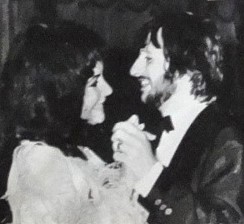 Upon careful listening, the next verse is actually a lyrical repeat of the first verse. Ringo, however, inadvertently sings the first line of the second verse here instead of the first verse, resulting in him singing “Close your eyes and I'll close mine” on top of the background singers line “Now it's time to say goodnight.” Ringo then apparently catches himself and sings the correct lyrics for the remainder of this verse, which features a brief reprise of the ascending stair-step melody line from the instrumental section in measures three and four. Upon careful listening, the next verse is actually a lyrical repeat of the first verse. Ringo, however, inadvertently sings the first line of the second verse here instead of the first verse, resulting in him singing “Close your eyes and I'll close mine” on top of the background singers line “Now it's time to say goodnight.” Ringo then apparently catches himself and sings the correct lyrics for the remainder of this verse, which features a brief reprise of the ascending stair-step melody line from the instrumental section in measures three and four.
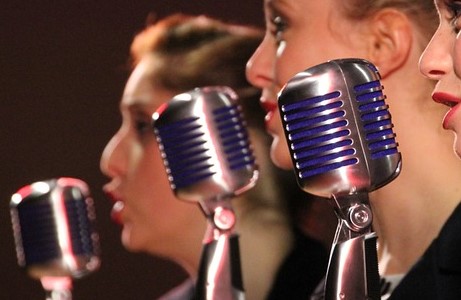 An even more hushed refrain follows thereafter, with Ringo faltering slightly a couple of times. The first time is at the end of the second measure as his voice cracks slightly getting out the words “for me,” and then again as he doesn't quite hit the note right on his first “dream” in the third measure. The background singers are even more prominently displayed in this final refrain, the last they are to be heard in the song. An even more hushed refrain follows thereafter, with Ringo faltering slightly a couple of times. The first time is at the end of the second measure as his voice cracks slightly getting out the words “for me,” and then again as he doesn't quite hit the note right on his first “dream” in the third measure. The background singers are even more prominently displayed in this final refrain, the last they are to be heard in the song.
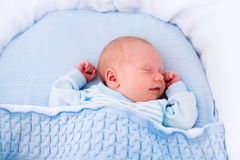 The five measure conclusion is heard next, the first four measures being a twice repeated reprise of the final two measures of the introduction, which contain the identifiable melody line that George Martin composed. The first two measures, however, display this melody line in a somewhat strident fashion, while the second set of measures repeat it in an extremely quiet tone as if to put a child to sleep in his bassinet. During these hushed measures, Ringo gently whispers “Good night, everybody...everybody, everywhere, good night.” As if to practice his whispering, Ringo utters a “good night” in measure two of this conclusion as well just before the hushed measures come in. The fifth and final measure of this conclusion is actually a final ringing chord to finish off the song as well as to allow the ninety-three minute “White Album” to fade away like the setting of the sun. The five measure conclusion is heard next, the first four measures being a twice repeated reprise of the final two measures of the introduction, which contain the identifiable melody line that George Martin composed. The first two measures, however, display this melody line in a somewhat strident fashion, while the second set of measures repeat it in an extremely quiet tone as if to put a child to sleep in his bassinet. During these hushed measures, Ringo gently whispers “Good night, everybody...everybody, everywhere, good night.” As if to practice his whispering, Ringo utters a “good night” in measure two of this conclusion as well just before the hushed measures come in. The fifth and final measure of this conclusion is actually a final ringing chord to finish off the song as well as to allow the ninety-three minute “White Album” to fade away like the setting of the sun.
American Releases
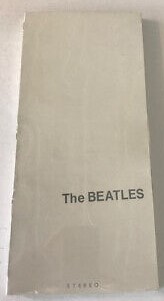 "Good Night" premiered for the world as the closing number to the highly anticipated and world renowned album "The Beatles," popularly known as the "White Album." The album was first released in the US on November 25th, 1968. It was released on compact disc for the first time on August 24th, 1987, then was re-released as a 30th Anniversary limited edition on November 23rd, 1998, then as a remastered CD on September 9th, 2009. Its original vinyl release in 1968 was only in stereo since mono albums were practically phased out in the US by that time. However, the vinyl album did finally get an individual mono vinyl album release in America on September 9th, 2014, as well as a vibrant new stereo mix that was released on vinyl on November 9th, 2018 for its 50th Anniversary. "Good Night" premiered for the world as the closing number to the highly anticipated and world renowned album "The Beatles," popularly known as the "White Album." The album was first released in the US on November 25th, 1968. It was released on compact disc for the first time on August 24th, 1987, then was re-released as a 30th Anniversary limited edition on November 23rd, 1998, then as a remastered CD on September 9th, 2009. Its original vinyl release in 1968 was only in stereo since mono albums were practically phased out in the US by that time. However, the vinyl album did finally get an individual mono vinyl album release in America on September 9th, 2014, as well as a vibrant new stereo mix that was released on vinyl on November 9th, 2018 for its 50th Anniversary.
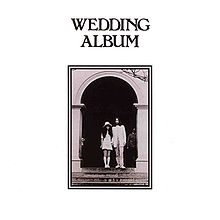 On November 7th, 1969, John and Yoko's elaborately packaged "Wedding Album" was released. Side two contains one long track entitled "Amsterdam," which is a montage of segments that were recorded at the Hilton Hotel, Amsterdam, Holland, including John singing an acapella verse of "Good Night" toward its conclusion. As indicated above, this was recorded sometime between March 25th and 31st, 1969. On November 7th, 1969, John and Yoko's elaborately packaged "Wedding Album" was released. Side two contains one long track entitled "Amsterdam," which is a montage of segments that were recorded at the Hilton Hotel, Amsterdam, Holland, including John singing an acapella verse of "Good Night" toward its conclusion. As indicated above, this was recorded sometime between March 25th and 31st, 1969.
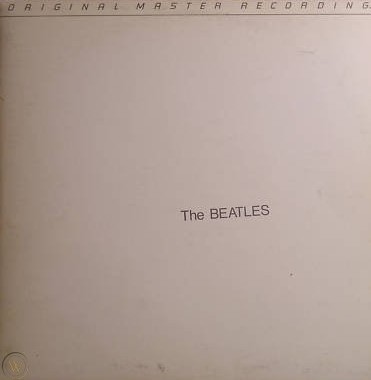 An interesting US vinyl edition of the “White Album” was released on January 7th, 1982, this being manufactured by Mobile Fidelity Sound Lab in Chatsworth, California as part of their "Original Master Recording" series. Their practice was to prepare a new master utilizing half-speed mastering technology from the original master tapes, in this case using the leased sub-master from Capitol Records. This release, which sounded superior to to all previous British and American pressings, was packaged in a non-embossed unnumbered cover that did not include the usual poster/lyric sheet or individual Beatles portraits as contained in standard releases. Nonetheless, this excellent edition of the album was only available for a short time and is quite collectible today. An interesting US vinyl edition of the “White Album” was released on January 7th, 1982, this being manufactured by Mobile Fidelity Sound Lab in Chatsworth, California as part of their "Original Master Recording" series. Their practice was to prepare a new master utilizing half-speed mastering technology from the original master tapes, in this case using the leased sub-master from Capitol Records. This release, which sounded superior to to all previous British and American pressings, was packaged in a non-embossed unnumbered cover that did not include the usual poster/lyric sheet or individual Beatles portraits as contained in standard releases. Nonetheless, this excellent edition of the album was only available for a short time and is quite collectible today.
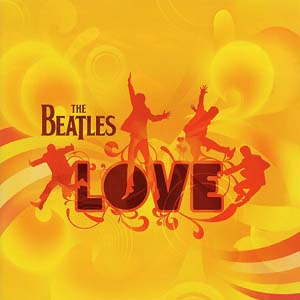 On October 28th, 1996, the compilation album “Anthology 3” was released which featured the gorgeous rehearsal of “Good Night” as mentioned above. On October 28th, 1996, the compilation album “Anthology 3” was released which featured the gorgeous rehearsal of “Good Night” as mentioned above.
November 20th, 2006, was the release date for the album “Love,” which was a companion album to the Cirque du Soleil show of the same name. Orchestral segments of “Good Night” were featured on two tracks also as mentioned above.
 The entire mono Beatles catalog was first released on September 9th, 2009 in compact disc form in the CD box set entitled “The Beatles In Mono,” which included the first official US release of the mono “White Album,” “Good Night” being included therein. The vinyl edition of this box set was first released on September 9th, 2014. The entire mono Beatles catalog was first released on September 9th, 2009 in compact disc form in the CD box set entitled “The Beatles In Mono,” which included the first official US release of the mono “White Album,” “Good Night” being included therein. The vinyl edition of this box set was first released on September 9th, 2014.
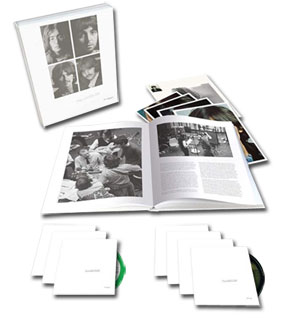 Various editions of the "White Album" were released on November 9th, 2018 to commemorate the 50th Anniversary of its original release. The "Deluxe" edition, which was made available in a 3CD set and a limited edition 180-gram 4LP vinyl set, contained the newly created Giles Martin mix of the "White Album." The "Super Deluxe" 6CD + 1Blu-ray edition also contained "take 10" as recorded on July 2nd, 1968, a humorous snippet of the introduction of a rehearsal that was taped on the same day, and "take 22" on July 22nd, 1968, which was a rehearsal that was commited to tape before the orchestra arrived in the studio on that day. Various editions of the "White Album" were released on November 9th, 2018 to commemorate the 50th Anniversary of its original release. The "Deluxe" edition, which was made available in a 3CD set and a limited edition 180-gram 4LP vinyl set, contained the newly created Giles Martin mix of the "White Album." The "Super Deluxe" 6CD + 1Blu-ray edition also contained "take 10" as recorded on July 2nd, 1968, a humorous snippet of the introduction of a rehearsal that was taped on the same day, and "take 22" on July 22nd, 1968, which was a rehearsal that was commited to tape before the orchestra arrived in the studio on that day.
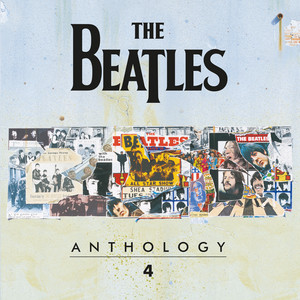 On November 21st, 2025, "Anthology 4" was released on both CD and vinyl, this album also being made available within the "Anthology Collection" box set on CD and on vinyl. "Take 10" of "Good Night" as they recorded at EMI Studio Two on July 2nd, 1968, as detailed above, was also included on this new release as it had been in the "White Album" "Super Deluxe" edition. On November 21st, 2025, "Anthology 4" was released on both CD and vinyl, this album also being made available within the "Anthology Collection" box set on CD and on vinyl. "Take 10" of "Good Night" as they recorded at EMI Studio Two on July 2nd, 1968, as detailed above, was also included on this new release as it had been in the "White Album" "Super Deluxe" edition.
Live Performances
Neither The Beatles collectively nor as solo performers ever performed “Good Night” live on any concert stage.
Conclusion
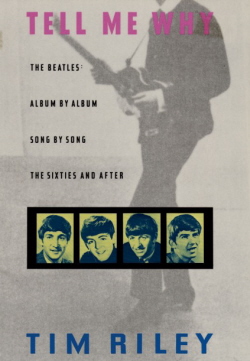 Upon reflection, concluding the “White Album” with “Good Night” was a masterstroke of genius. At over 93 minutes in length, this double-album was by far the longest LP The Beatles ever released, American audiences being accustomed to their albums lasting less than 30 minutes. As author Tim Riley states in his book “Tell Me Why,” ending this large work of art with “Revolution 9” would undoubtedly have been a mistake. “If that track had closed all four sides, it would have a more ominous presence...'Good Night''s farewell is softer – calm, serene and incantatory. It has the classical feel of a standard that speaks through the ages.” Upon reflection, concluding the “White Album” with “Good Night” was a masterstroke of genius. At over 93 minutes in length, this double-album was by far the longest LP The Beatles ever released, American audiences being accustomed to their albums lasting less than 30 minutes. As author Tim Riley states in his book “Tell Me Why,” ending this large work of art with “Revolution 9” would undoubtedly have been a mistake. “If that track had closed all four sides, it would have a more ominous presence...'Good Night''s farewell is softer – calm, serene and incantatory. It has the classical feel of a standard that speaks through the ages.”
Song Summary
“Good Night”
Written by: John Lennon / Paul McCartney
- Song Written: June, 1968
- Song Recorded: July 26, 1968
- First US Release Date: November 25, 1968
- First US Album Release: Apple #SWBO-101 “The Beatles”
- US Single Release: n/a
- Highest Chart Position: n/a
- British Album Release: Apple #PCS 7067-7068 “The Beatles”
- Length: 3:14
- Key: G major
- Producer: George Martin
- Engineers: Ken Scott, Richard Lush
Instrumentation (most likely):
- Ringo Starr - Vocals
- Unknown - violins (12)
- Unknown - violas (3)
- Unknown - cellos (3)
- Unknown - harp
- Unknown - flutes (3)
- Unknown - clarinet
- Unknown - horn
- Unknown - vibraphone
- Unknown - string bass
- Ingrid Thomas - vocals
- Pat Whitmore - vocals
- Val Stockwell - vocals
- Irene King - vocals
- Ross Gilmour - vocals
- Mike Redway - vocals
- Ken Barrie - vocals
- Fred Lucas - vocals
Written and compiled by Dave Rybaczewski
|
IF YOU WOULD LIKE TO MAKE A DONATION TO KEEP THIS WEBSITE UP AND RUNNING, PLEASE CLICK BELOW!
Sign Up Below for our MONTHLY BEATLES TRIVIA QUIZ!
|